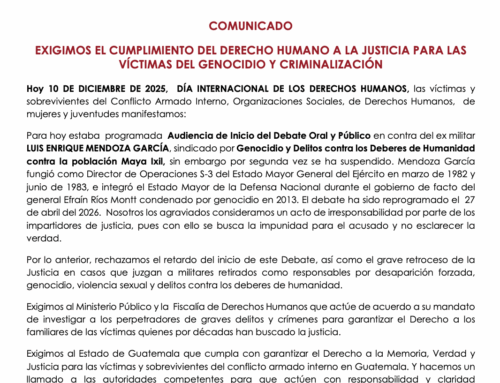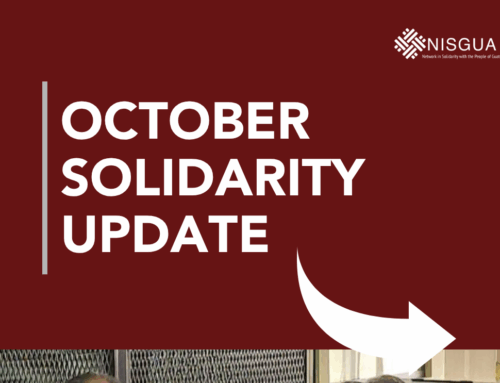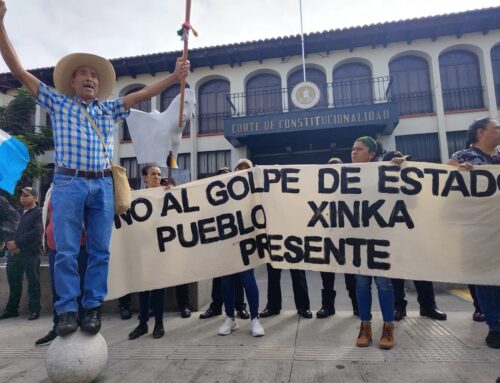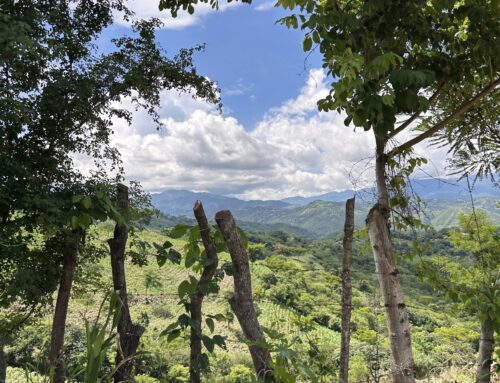Monday May 20th, 2024.
The first forensic anthropology expert Raúl Humberto Archila García, who worked at the FAFG (Guatemalan Forensic Anthropology Foundation) until 2013, was present to affirm 3 expert reports on various individual and collective graves.
The second expert of the day, the historian Angel Romeo Valdez Estrada, certified his report on the culture of the Ixil people, which was prepared at the request of various institutions. The expert talked about the structural racism in Guatemala and the actions against the Ixil community.
“The alteration of culture to precipitate the annihilation of the inhabitants who live and practice it entails a process that was previously carried out, it is not spontaneous, fortuitous or casual, it follows a strategic plan duly designed for its execution.”
He also described the impacts of forced displacement and the use of the category “internal enemy”:
A national group does not need to be considered an internal enemy as a whole nor should their right to culture be violated by altering, annihilating, or questioning it. In the case of the Ixil people, this process began previously through “in situ” studies that determined the way of life, the culture, and the relationships that could produce the respective alteration, as well as the possible effects that would cause the uprooting and annihilation of part of its population.”
The expert also pointed out that “Anticommunism was the discourse for people to accept the genocide”.
The third expert witness of the day, José Fernando Alonso, who worked at the FAFG (Guatemalan Forensic Anthropology Foundation), confirmed physical anthropology reports in Chajul, in which he identified various skeletons.
Tuesday May 21st, 2024
In the hearing today, the High-Risk Court “A”, listened to the testimony of 2 expert witnesses.
The first to speak was Luis Raúl Salvadó Cardoza, who certified the report “Internal Armed Conflict and the Ixil People, 1978-1982 (Conflicto Armado Interno y Pueblo Ixil, 1978-1982 -elementos para su estudio), elements for its study”. The report, requested by the Public Prosecutor Office, focused on the scorched earth policy in the Ixil region, during the government of Fernando Romeo Lucas García and state repression: “The tragedy of the Ixil people is not only due to a few people but to State that trained itself to destroy these people from the doctrines of security and counterinsurgency during the Internal Armed Conflict”. He referred to the aspects such as the State’s abandonment of Ixil region, the organization of the Ixil people to gain access to land, and the impacts of the anti-communist repression, which would later become counterinsurgency and had practical effects in the prosecution of farmers identified as internal enemies”.
He referred to the Cold War and the National Security Doctrine as a frame of reference for the conflict in Guatemala. The expert also indicated that, from the colonial period, the Ixil people suffered dispossession of their lands; and the same occurred during the armed conflict.
The second expert witness, Edgar Alberto Telón del Cid, certified various forensic archeology reports while working in the search of specific individuals at the request of victims’ families.
Wednesday, May 22 and Thursday, May 23, 2024
The expert Marco David García King, a graduate in biochemistry and microbiology and expert in genetics, shared his report findings on his work in identification through comparative DNA testing with family members.
The expert who works for FAFG as the head of the Directorate of Forensic Genetics and the Bank of Genetics indicated that to identify victims, a 99.99% match with the DNA of relatives is sought.
For example, he declared that in the Xolotzinay Military Base, 80 skeletons were recovered, 60 of which were identified through DNA analysis as they all had a 99.99% match between relatives and skeletons of victims, which proved scientifically the veracity of statements of relatives to the court and the fact that they were extracted from mass graves, in the former military base, proves the responsibility of the Guatemalan military and General Manuel Benedicto Lucas García in his capacity as the Chief of Operations in the Guatemalan Military at the beginning of 1982.





Leave A Comment